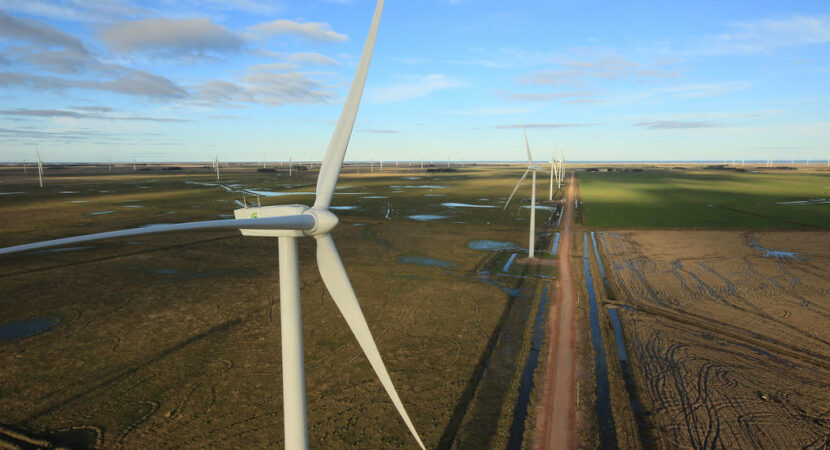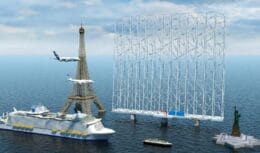
Project of the State of Rio Grande do Norte about wind power plants will be voted on at Conema and, as soon as it is voted, it will be published and will come into force
In a new proposal, the Government of Rio Grande do Norte suggests that new wind energy projects with capacity above 150 megawatts present research and environmental impact reports (EIA-RIMA). The proposal confronts a recommendation by the State Attorney General's Office (PGE-RN), which proposed studies for new projects above 10 megawatts (MW).
Read also
- Mineradora da Bahia has job openings for IT professionals, technicians and supervisors;
- Flying car: Embraer formalizes certification request to the National Civil Aviation Agency (ANAC) for the aircraft;
- The manufacturer of large vehicles Iveco has plans to invest BRL 1 billion in Latin America over the next 3 years
According to Hugo Fonseca, Energy Development coordinator at the State Secretariat for Economic Development (Sedec-RN), this determination will create guidelines and regulations for new wind energy projects in Rio Grande do Norte. According to the online newspaper Tribuna do Norte, the document should be analyzed by the State Council for the Environment (Conema) this Tuesday (15), and as soon as it is voted on it will be published and will come into force.
“The proposal has already been sent to the Council and is in the process of being forwarded to the councilors. The hearing is scheduled for the 15th”, says Hugo. Still, he shows concern about the wind category, since the requirement of environmental studies can make it difficult to invest in a sector in which Rio Grande do Norte is a leader in energy production. “We put the 'exceptional' size for parks above 150 MW, but only in the vote will we know if the directors will accept it or not. Any board member can suggest or propose changes”, he adds.
For Rio Grande do Norte to adapt to the national Conama law, regulation is essential. As recommended by the State Attorney General, power plants, regardless of whether the energy source is wind or any other, above 10 MW, would need environmental analyzes in order to be licensed.
The president of the Brazilian Association of Wind Energy, Elbia Gannoum, points out: “Quantitative definition does not solve the problem. You can create restrictions where it is not necessary (EIA-RIMA), depending on the diversity, the biome, and you can leave free areas that need it when you define power. So power definition is not a technical solution for the environmental issue. The definition has to be qualitative, and I hope that the work that Sedec is doing is along these lines. The other states also work like this ".
For example, in Ceará, environmental impact studies are only required for energy projects greater than 150 MW. For Elbia, the requirement for small projects may reduce investors in Rio Grande do Norte.
“If the State applies a target as restrictive as this one, what will happen is that Rio Grande do Norte will lose investments [...] The investor will arrive here and will identify so many difficulties that he will migrate to another place, and the state you will lose the opportunity and the investment”, she adds.
Report on fragile environmental areas
According to Hugo Fonseca, the documentation that will be voted on at Conema is required by the EIA-RIMA in two cases: installation of wind farms in sensitive places and projects of “Exceptional” size.
“That is, in areas of environmental fragility, the Atlantic Forest, advanced desertification, indigenous and quilombola areas, which are more sensitive from a social and environmental point of view, the EIA-RIMAS will be required in these areas, regardless of the potency. [..] Those of exceptional size will already file with an EIA-RIMA, regardless of whether they are in a fragile area or not. Normally, an exceptional size would already be 150 MW”, explains the coordinator.
Recommendation of the PGE/RN
The recommendation was changed due to an inconsistency seen by the agency between the state regulation of Conema and the national resolution of the National Council for the Environment (Conama). Rio Grande do Norte differentiates wind farms in micro (up to 5 MW); small (from 5 to 15 MW); medium (from 15 to 45 MW); large (from 45 to 135 MW); and exceptional (above 135 MW). However, the State considers all levels as potential environmental polluters.
Thus, wind power plants in Rio Grande do Norte are exempt from submitting the EIA-RIMA to the Institute for Sustainable Development and the Environment (Idema). Today, only the Simplified Environmental Report is requested, since the undertakings have a low polluting potential. The EIA-RIMA requires environmental compensation of up to 0,5% of the investment value.












Air Force F-16 fighters…
True friend, what they shot down were…
Air Force F-16 fighters…
I would like to know what planet you live on…
Air Force F-16 fighters…
Everything is fine, 100-year secrecy,…
Air Force F-16 fighters…
Well... It's flying scrap... Typical...
Army summons Brazilians with up to…
Come be a watermelon, you too
And my dream is to have energy. Solar.although I…
William, I want to participate in this selection process…
They couldn't finish a mere train of...
The vision it gives us is…
I work as a hydraulic firefighter, electrical assistant…
Wow, right, why don't you release it until...
This channel is becoming an expert and…
How do I apply for these vacancies?